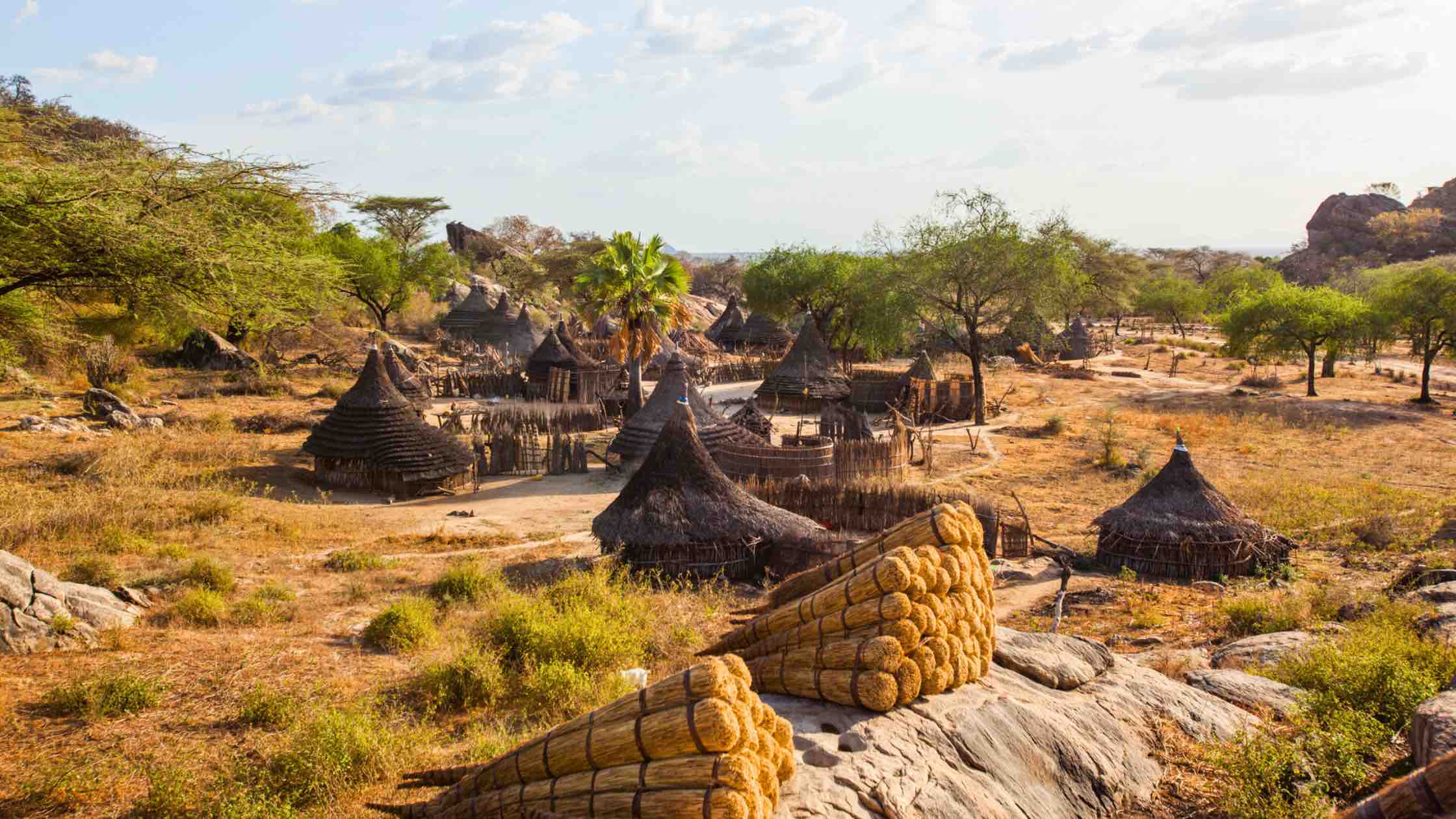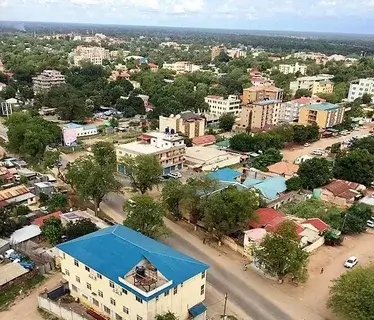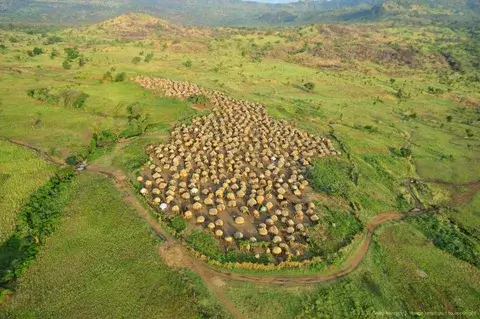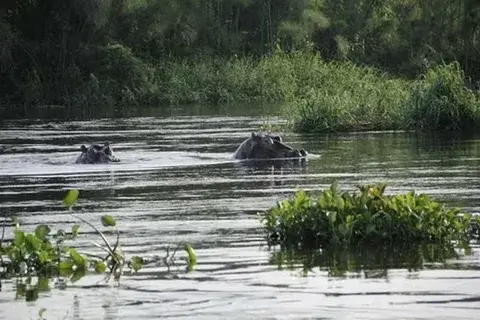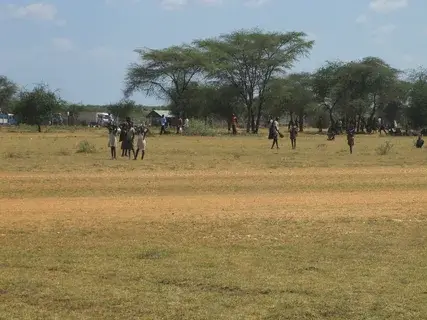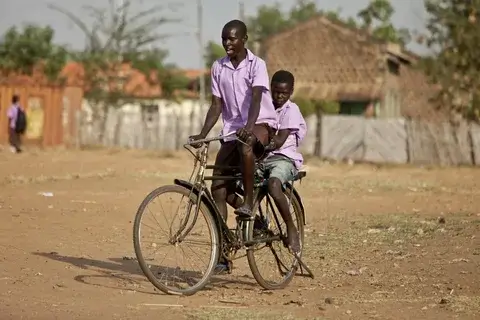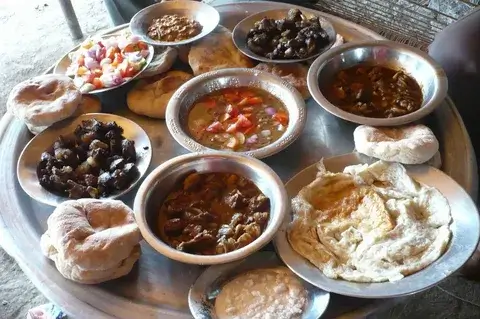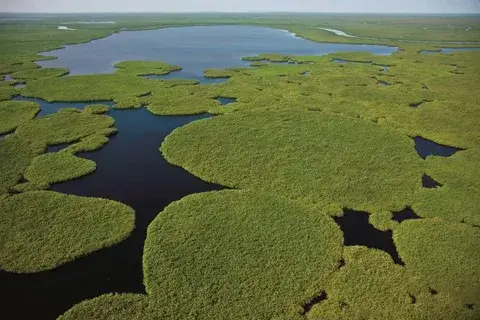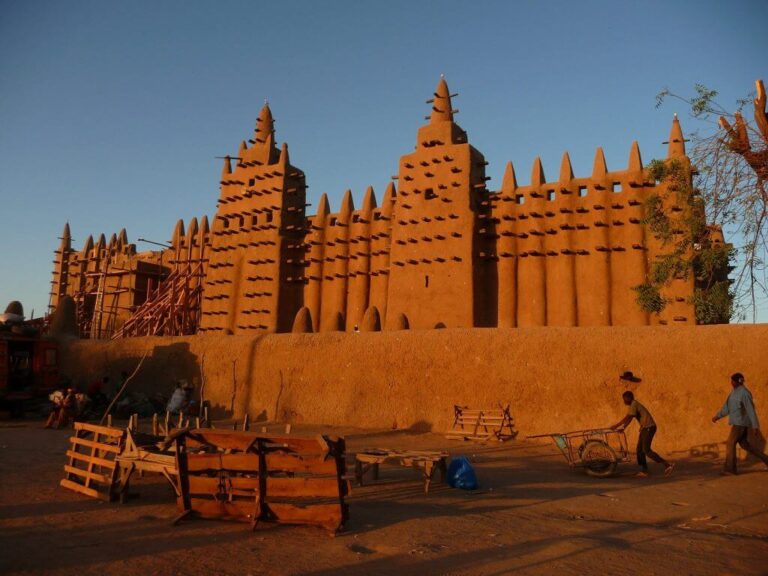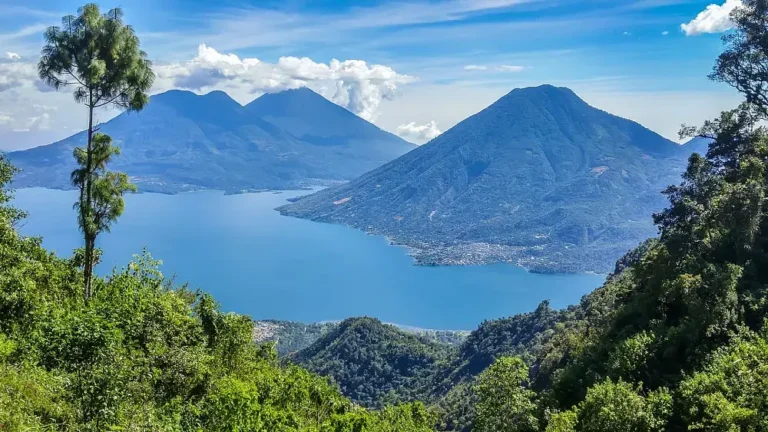Our Top 5 Best Places to Visit in South Sudan:
Exploring the Uncharted: 5 Must-Visit Places in South Sudan
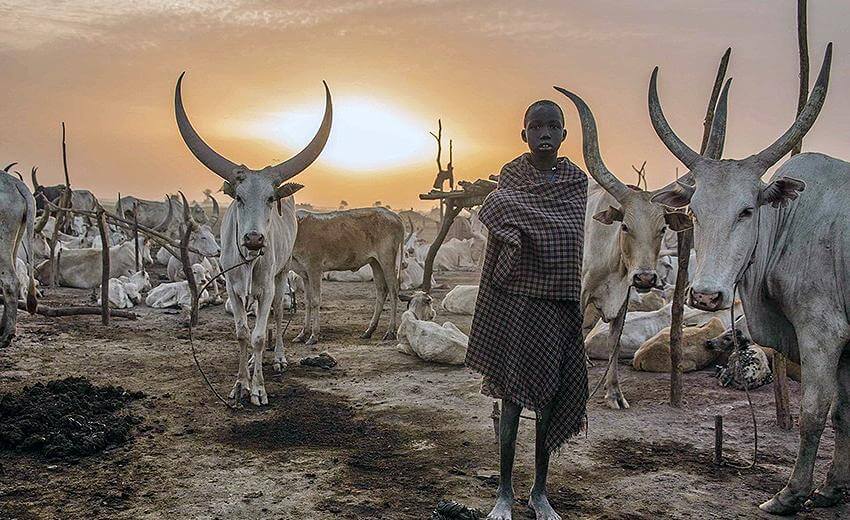
South Sudan, the world’s newest nation, is an undiscovered gem waiting to be explored.
The Official advice is NOT TO TRAVEL TO SOUTH SUDAN!
Anyway, moving right along..
During my journey through this uncharted territory, I uncovered hidden treasures, savored local flavors, and marveled at its untamed beauty. I’ll take you through the five best places I visited in South Sudan, sharing unique personal experiences and little gems I discovered along the way.
Map of South Sudan and Bordering Countries:

Map Showing South Sudan Location in Africa:

Countries Bordering South Sudan:
South Sudan, officially the Republic of South Sudan, is a landlocked country in East Africa. It is bordered by Ethiopia, Sudan, the Central African Republic, the Democratic Republic of the Congo, Uganda, and Kenya. Its population was estimated at 11,088,796 in 2023. Juba is the capital and largest city.
Our Top 5 Best Places to Visit in South Sudan:
1. Juba – The Capital’s Authentic Charms:
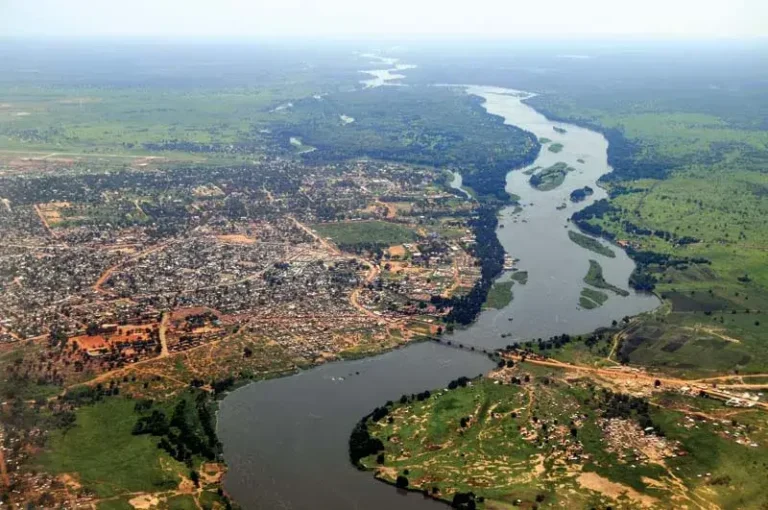

Our adventure begins in Juba, the capital city, where the bustling local markets and the serene Nile River coexist. Wander through the colorful Souk Arabi, sample local dishes, and visit the John Garang Mausoleum to learn about South Sudan’s struggle for independence.

- Unique Experience: Wandering through the bustling Juba Souk, I was captivated by the vibrant colors and sounds of local vendors selling handmade crafts and spices. It was a sensory journey.
- Hidden Gem: For a taste of local breakfast, I stumbled upon a small street vendor near the Nile River offering “ful,” a hearty fava bean stew, and “kisra,” a delicious flatbread. A simple yet unforgettable breakfast experience.
- Sundowners: The Nile River offers the perfect backdrop for sundowners. I sipped on “Sout al-Sudan,” a local beer, as the sun painted the sky in vivid hues.
2. Boma National Park – A Wildlife Wonderland:
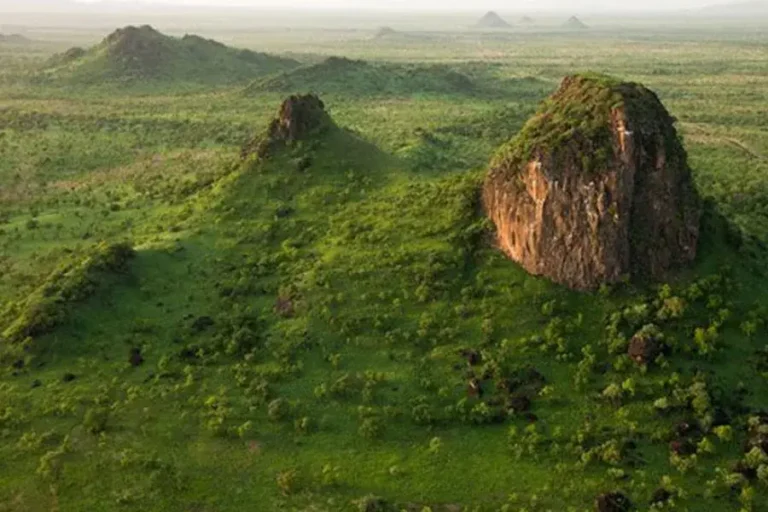

Boma National Park, in the eastern part of South Sudan, offers untouched landscapes and diverse wildlife. Embark on game drives to spot antelopes, zebras, and bird species, or simply enjoy the tranquil beauty of the park’s untouched wilderness.
- Unique Experience: During a safari in Boma National Park, I witnessed a herd of elephants calmly making their way to a watering hole. It was a majestic sight, and our guide’s knowledge of the park’s ecosystem was impressive.
- Hidden Gem: At the park’s edge, a local chef prepared a traditional meal of “asida” (porridge) and grilled Nile perch. Dining al fresco amidst nature’s wonders was a highlight.
3. Nimule National Park – Where Nature and Serenity Meet:


Nimule National Park, in the southeast, offers a wilderness experience like no other. Roam the savannas, encounter herds of elephants, and embark on boat safaris along the White Nile to witness crocodiles and hippos in their natural habitat.
- Unique Experience: While hiking through Nimule National Park, I discovered a secluded waterfall, hidden deep within the lush forest. Taking a refreshing dip in its crystal-clear waters was pure bliss.
- Hidden Gem: For a leisurely coffee break, I stumbled upon a small cafe in Nimule town. The locally brewed coffee, accompanied by warm hospitality, offered a delightful respite.
4. Kapoeta – A Cultural Oasis:


Kapoeta, a charming town in Eastern Equatoria, is known for its vibrant markets and traditional craftsmanship. Don’t miss the chance to witness the extraordinary beadwork and jewelry-making skills of the local Toposa tribe.
- Unique Experience: I had the privilege of witnessing a mesmerizing Toposa dance performance in Kapoeta. The rhythmic beats and vibrant costumes reflected the rich cultural heritage of this community.
- Hidden Gem: At a modest eatery, I savored “kisrah,” a local flatbread served with “busa,” a traditional fermented milk beverage. It was a simple yet authentic culinary experience.
5. Torit – A Glimpse into Local Life:


Torit, in the Eastern Equatoria region, is a cultural haven. Explore the indigenous culture of the Boya people, discover traditional dance performances, and savor local delicacies like “asida” (porridge) and “nyama choma” (grilled meat).
- Unique Experience: In Torit, I joined a local family for a traditional meal. We sat on woven mats, sharing dishes like “mullah,” a flavorful meat stew, and engaging in lively conversation.
- Hidden Gem: For a memorable sundowner, I visited a hilltop viewpoint overlooking Torit town. As the sun dipped below the horizon, the town’s lights began to twinkle, creating a magical scene.
Did we mention the food? EAT!

South Sudanese cuisine is a delightful fusion of flavors that reflects the country’s diverse cultural influences and agricultural abundance. One can savor the hearty staples like “injera,” a sourdough flatbread reminiscent of Ethiopian cuisine, which serves as a perfect accompaniment to stews and grilled meats.
Don’t miss the aromatic dishes made with spices and herbs, such as “ful medames,” a flavorful mix of fava beans, and the richly spiced “asida” served with various sauces. Freshly caught Nile perch is a seafood lover’s dream, often prepared with a medley of herbs and spices. Street food vendors offer a variety of snacks like “kisra,” a thin sorghum flatbread, and “samboosa,” delectable deep-fried pastries stuffed with meat or vegetables.
South Sudanese cuisine is a culinary adventure waiting to be explored, offering a delicious insight into the country’s culture and traditions.
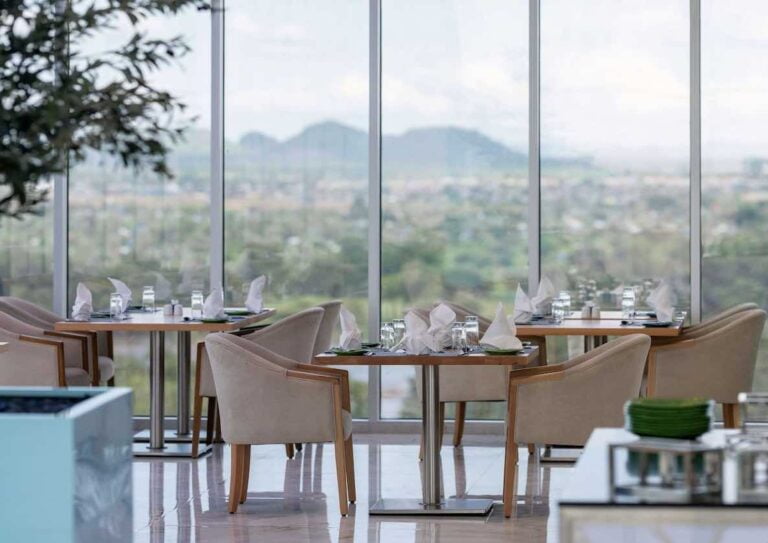
Essential Things to Know Before Traveling to South Sudan:
Traveling to South Sudan, the world’s youngest nation, can be an adventurous and rewarding experience, but it’s essential to be well-prepared due to the country’s unique challenges and circumstances. Here are some essential things to know before traveling to South Sudan:
- Safety and Security: South Sudan has experienced periods of conflict and instability. It’s crucial to stay updated on the current security situation before and during your trip. Check travel advisories from your government and consider consulting with local authorities or organizations on the ground.
- Visa and Documentation: Ensure you have a valid visa before your arrival. Contact the South Sudanese embassy or consulate in your home country for visa requirements and other entry documents. Keep copies of your passport, visa, and other essential documents in a secure location.
- Health Precautions: Consult a travel clinic or healthcare provider for vaccinations and health advice. Malaria is prevalent in South Sudan, so take appropriate prophylactic medication and use mosquito nets and repellents.
- Travel Insurance: Purchase comprehensive travel insurance that covers medical emergencies, evacuation, and unexpected trip cancellations. Verify that your insurance includes coverage for travel to high-risk areas.
- Local Customs and Culture: South Sudan has a diverse range of ethnic groups and cultures. Respect local customs and traditions, such as dressing modestly, especially in rural areas. Greet people politely and ask for permission before taking photographs.
- Language: The official languages are English and Arabic, but there are over 60 indigenous languages spoken. Learning a few basic phrases in Arabic can be helpful for communication.
- Currency and Payment: The South Sudanese Pound (SSP) is the official currency. Credit cards are rarely accepted, so carry enough cash in small denominations for your daily expenses. Be cautious when using ATMs, as they may not be reliable.
- Infrastructure: South Sudan’s infrastructure is limited, with poorly maintained roads and minimal public transportation. Domestic flights are often the most efficient way to travel between cities.
- Accommodation: Accommodation options can be limited and vary in quality. It’s advisable to book your accommodations in advance, especially in the capital, Juba. Be prepared for basic amenities in some areas.
- Communication: Mobile phone coverage is available in major cities, but it may be unreliable in remote areas. Purchase a local SIM card for communication and data access.
- Local Laws and Regulations: Familiarize yourself with South Sudan’s laws and regulations. Be aware of restrictions on photography in certain areas, and avoid engaging in political discussions.
- Food and Water: Stick to bottled water and avoid consuming raw or undercooked food to prevent foodborne illnesses. South Sudanese cuisine is diverse and flavorful, but be cautious when eating from street vendors.
- Respect for the Environment: South Sudan boasts stunning natural beauty. Be responsible and avoid littering or damaging the environment while exploring national parks and natural areas.
- Power Supply: Electricity supply can be unreliable, and power outages are common. Carry a power bank and adapters for your electronic devices.
- Local Guides and Tours: When exploring natural and cultural attractions, consider hiring local guides who are familiar with the area and can provide valuable insights and enhance your safety.
By being well-prepared and staying informed, you can have a safe and enriching travel experience in South Sudan. Remember to remain flexible and adaptable, as conditions in the country can change rapidly.
How to Get to South Sudan:
Getting to South Sudan typically involves international flights, as the country is landlocked and shares borders with several neighboring countries. Here are the general steps to get to South Sudan:
- Obtain a Visa: Before you can travel to South Sudan, you will need to obtain a visa. Contact the South Sudanese embassy or consulate in your home country to find out the specific visa requirements and application process. Make sure to allow ample time for visa processing.
- Choose Your Entry Point: South Sudan has a few international airports, but the main point of entry for most travelers is Juba International Airport (JUB), located in the capital city, Juba. Check the availability of flights to Juba or other entry points depending on your travel plans.
- Book Flights: Search for international flights to Juba or other airports in South Sudan. Depending on your location, you may need to book connecting flights. Major airlines that serve Juba include Ethiopian Airlines, Kenya Airways, and EgyptAir. Be sure to compare prices and flight schedules to find the best options for your trip.
- Ensure Travel Insurance: Purchase travel insurance that covers medical emergencies, evacuation, and unexpected trip cancellations. Verify that your insurance includes coverage for travel to South Sudan.
- Health Precautions: Consult a travel clinic or healthcare provider for vaccinations and health advice specific to South Sudan. Malaria is prevalent in the country, so it’s essential to take prophylactic medication and use mosquito nets and repellents.
- Pack Essentials: Prepare your travel documents, including your passport, visa, travel insurance, and any required permits. Ensure you have enough prescription medications, as well as over-the-counter medicines and first-aid supplies. Pack appropriate clothing and essentials for the local climate.
- Airport Arrival: When you arrive at Juba International Airport or another South Sudanese airport, you will go through immigration and customs procedures. Make sure to have all your documents in order and follow the instructions of airport staff.
- Local Transportation: Upon arrival, arrange transportation to your accommodation. It’s advisable to pre-arrange a pickup with your accommodation provider or use a reputable taxi service.
- Stay Informed: Keep abreast of the current security situation in South Sudan by checking travel advisories from your government and local authorities. Conditions can change rapidly, so stay informed during your stay.
- Explore South Sudan: Once you’ve arrived, you can begin exploring South Sudan’s unique attractions, whether it’s the vibrant capital city of Juba, national parks, cultural sites, or other points of interest. Be sure to respect local customs and regulations during your visit.
Always be flexible and prepared for potential challenges, as South Sudan is a developing nation with limited infrastructure. Stay informed about the local conditions and plan your trip accordingly to ensure a safe and rewarding experience in this remarkable country.
How to Get Around South Sudan:
Getting around South Sudan can be challenging due to limited infrastructure and road conditions. However, with careful planning and some flexibility, you can navigate the country. Here are some ways to get around South Sudan:
- Domestic Flights:
- Domestic flights are the most efficient way to travel between major cities and regions in South Sudan. Juba International Airport serves as the primary hub for domestic flights.
- Airlines like South Sudan Supreme Airlines and Kush Air operate domestic routes to destinations such as Malakal, Wau, Rumbek, and more.
- Be prepared for schedule changes, delays, and cancellations due to weather and other factors.
- Road Travel:
- South Sudan’s road network is often in poor condition, and traveling by road can be challenging. Many roads are unpaved and subject to seasonal flooding.
- If you plan to travel by road, consider hiring a local driver who is familiar with the conditions and routes. Four-wheel-drive vehicles are advisable for remote areas.
- Check the security situation before embarking on road trips, as some regions may be unsafe due to conflict or banditry.
- Public Transportation:
- In urban areas like Juba, you can find minibuses and shared taxis for short-distance travel. Negotiate fares before boarding.
- Public transportation options outside of major cities are limited. Be prepared for a lack of reliable public transportation in rural areas.
- Motorcycle Taxis:
- Motorcycle taxis, known as “boda-bodas,” are a common means of transportation in some South Sudanese cities and towns. They are especially useful for short trips within urban areas.
- Boat Travel:
- In regions with navigable waterways, such as along the Nile River, boats may be a mode of transportation. Ferries and boats connect some towns and villages.
- Walking:
- In urban areas and smaller towns, walking can be a practical way to explore. Be sure to carry essentials like water, a hat, and sunscreen, especially in the hot climate.
- Safety Precautions:
- Keep safety in mind when traveling in South Sudan. Stay informed about the security situation, follow any curfews or travel restrictions, and avoid travel at night when possible.
- Carry essential supplies like water, snacks, and a first-aid kit, as services may be limited in remote areas.
- Local Guidance:
- Local knowledge can be invaluable when navigating South Sudan. Consider hiring local guides or asking for advice from locals regarding the best routes and transportation options.
- Language:
- English and Arabic are the official languages, but many locals speak indigenous languages. Learning a few basic phrases in Arabic can be helpful for communication.
- Flexibility:
- Be prepared for changes in your travel plans due to unforeseen circumstances, such as weather, road conditions, or security concerns. Flexibility is key when traveling in South Sudan.
Always stay informed about the current situation, especially in areas prone to conflict or instability. Check travel advisories and consult with local authorities for up-to-date information on safety and travel conditions.
FAQ – Our Top 5 Best Places to Visit in South Sudan and Traveling to South Sudan in General
Traveling to South Sudan: Frequently Asked Questions
1. Is South Sudan a safe travel destination?
- South Sudan has experienced periods of conflict and instability. The security situation can change rapidly, so it’s essential to stay informed about the current conditions in the country. Check travel advisories from your government and local authorities before planning your trip.
2. Do I need a visa to travel to South Sudan?
- Yes, most travelers need a visa to enter South Sudan. Contact the South Sudanese embassy or consulate in your home country for visa requirements and application procedures. Ensure you apply for your visa well in advance of your planned travel dates.
3. What are the health precautions I should take before traveling to South Sudan?
- Consult a travel clinic or healthcare provider for vaccinations and health advice specific to South Sudan. Malaria is prevalent, so take prophylactic medication, use mosquito nets, and apply insect repellent. Carry essential medications and a first-aid kit.
4. How can I get around South Sudan?
- Domestic flights are the most efficient means of travel between major cities and regions. Road travel is challenging due to poor road conditions, and public transportation options are limited in many areas. Hiring a local driver or guide can be helpful for road trips.
5. Is it safe to travel by road in South Sudan?
- Road conditions can be poor, and many roads are unpaved. Traveling by road in South Sudan can be challenging, and safety concerns may arise in certain regions. Stay informed about the security situation, consider hiring a local driver, and choose a suitable vehicle for road trips.
6. What should I pack for my trip to South Sudan?
- Pack lightweight, breathable clothing suitable for the hot climate. Sunscreen, a hat, and sunglasses are essential. Ensure you have adequate supplies of bottled water, snacks, and any necessary medications. A power bank and adapters for electronic devices can be helpful due to unreliable electricity.
7. Is English widely spoken in South Sudan?
- Yes, English is one of the official languages of South Sudan and is commonly spoken in urban areas. Arabic is also widely used. However, many locals speak indigenous languages, so learning a few basic phrases in Arabic can aid communication.
8. What currency is used in South Sudan?
- The official currency is the South Sudanese Pound (SSP). Credit cards are rarely accepted, so carry enough cash in small denominations for your daily expenses. Be cautious when using ATMs, as they may not always be reliable.
9. Are there accommodations available in South Sudan?
- Accommodation options exist in major cities like Juba, but they can be limited in more remote areas. It’s advisable to book your accommodations in advance, especially in the capital. Be prepared for basic amenities in some regions.
10. Can I engage in wildlife safaris in South Sudan?
– Yes, South Sudan offers opportunities for wildlife safaris, with national parks like Boma and Nimule. However, ensure you have the necessary permits and arrangements in place, and consider hiring local guides for a safe and informative experience.
11. What are some cultural considerations when visiting South Sudan?
– Respect local customs and traditions, especially regarding clothing and behavior. Ask for permission before taking photographs, and engage with locals politely. Be open to learning about and appreciating the diverse cultures within the country.
12. Is it safe to drink tap water in South Sudan?
– It is not advisable to drink tap water in South Sudan. Stick to bottled water to avoid waterborne illnesses.
13. How do I stay updated on the security situation in South Sudan during my trip?
– Stay informed by regularly checking travel advisories from your government and local authorities. Consider registering with your embassy or consulate, so they can reach you in case of emergencies.
Remember that conditions in South Sudan can change rapidly, so maintaining flexibility and vigilance is crucial when traveling to this unique and challenging destination.
Best Places to Visit in South Sudan: Frequently Asked Questions
Frequently Asked Questions (FAQ) – Places to Visit in South Sudan
1. What are the top tourist destinations in South Sudan?
- South Sudan offers diverse attractions, including Juba (the capital), Boma National Park, Nimule National Park, Kapoeta, Malakal, and various cultural sites. Each destination offers a unique experience.
2. What can I explore in Juba, the capital city of South Sudan?
- Juba is known for its vibrant markets, historic sites, and the Nile River. Don’t miss the Nile waterfront for sundowners, exploring local markets, and visiting cultural landmarks like the Juba Cathedral and Dr. John Garang Mausoleum.
3. What makes Boma National Park a must-visit destination?
- Boma National Park is renowned for its untouched wilderness, diverse wildlife, and stunning landscapes. It’s a great place for safaris, night safaris, and birdwatching.
4. What can I experience at Nimule National Park?
- Nimule National Park is a haven for birdwatchers, with over 300 bird species. It also offers the chance to see various wildlife species and explore the scenic banks of the Nile River.
5. What is unique about Kapoeta, and why should I visit?
- Kapoeta offers insight into diamond mining and indigenous culture. You can visit local villages, observe traditional dances, and explore diamond markets. It provides a unique cultural and economic perspective.
6. Are there historical sites in Malakal worth visiting?
- Malakal has remnants of colonial architecture and the Malakal Museum, which provides historical context about the region. The Nile River also adds to the charm of this town.
7. What are some cultural considerations when visiting South Sudan’s destinations?
- Respect local customs and traditions. Ask for permission before taking photographs, dress modestly (especially in rural areas), and engage with locals politely to learn about their culture.
8. Are there opportunities for outdoor adventures in South Sudan?
- Yes, South Sudan offers opportunities for outdoor activities such as safaris, birdwatching, hiking, and exploring natural landscapes. Always ensure you have the necessary permits and guides for your chosen activities.
9. Can I visit South Sudan’s national parks independently, or do I need a guide?
- While it’s possible to visit some national parks independently, hiring local guides is recommended for safety and to enhance your experience. They can provide valuable insights into the flora, fauna, and culture of the region.
10. What’s the best way to get around South Sudan to visit these destinations?
– Domestic flights are the most efficient means of travel between major cities and regions. For shorter distances and within urban areas, you can use minibuses, shared taxis, or motorcycle taxis. Road travel can be challenging due to poor road conditions.
11. How can I stay informed about the security situation in South Sudan when planning my visit?
– Stay updated by checking travel advisories from your government and local authorities. Conditions can change, so monitor the situation before and during your trip.
12. What is the best time to visit South Sudan for tourists?
– The dry season from December to April is generally considered the best time to visit South Sudan. During this period, the weather is more predictable, and wildlife viewing is at its peak.
13. Are there accommodations available near these tourist destinations?
– Accommodation options vary but exist in major cities and some tourist destinations. Book accommodations in advance, especially in Juba. Be prepared for basic amenities in remote areas.
14. Can I find local cuisine in these destinations, and what should I try?
– Yes, you can find South Sudanese cuisine in local restaurants. Try dishes like “ful medames,” “injera,” and “asida.” Street vendors offer snacks like “kisra” and “samboosa.” Don’t miss the opportunity to experience the local flavors.
Remember that South Sudan is a unique and adventurous destination, and it’s essential to be well-prepared and informed before your visit to make the most of your experience.
You want more on Places to visit in South Sudan? ⬇️ ⬇️ ⬇️
BONUS – Sudd Wetlands:

During my unforgettable journey to South Sudan, I found myself immersed in a world of natural wonders and unique experiences in the Sudd Wetland where I finished off my trip. As the sun gently cast its morning glow over the wetland, I ventured out to discover some hidden gems. A local fisherman introduced me to a secluded spot, where I indulged in a traditional South Sudanese breakfast of akara and ful medames, served with a side of fresh fruit. The flavors were a delightful surprise, offering a taste of the local cuisine.
After breakfast, I embarked on a boat excursion along the meandering waterways, where the lush vegetation provided a serene backdrop to the abundant birdlife. I had the opportunity to spot rare and vibrant bird species, such as the Goliath heron and the African fish eagle. The wetland’s tranquility was only interrupted by the mesmerizing calls of these feathered residents.
As the day progressed, I found myself in awe of the local culture and hospitality. I stumbled upon a small village where I was invited to share a cup of rich South Sudanese coffee with the villagers. The warm conversations and the aromatic coffee made for a memorable experience, connecting me with the heart of the community.
In the evening, I headed to the edge of the wetland to witness a breathtaking South Sudanese sunset. With the sky painted in hues of orange and pink, I enjoyed sundowners while listening to local stories and songs. The camaraderie among fellow travelers and locals created an atmosphere of togetherness that will forever stay with me.
My journey through the Sudd Wetland was a tapestry of unique experiences, from the delectable breakfasts to the heartwarming encounters with the locals and the captivating natural beauty. South Sudan’s hidden treasure left an indelible mark on my soul, reminding me of the richness that can be found in the most unexpected places.
Our Top 5 Best Places to Visit in South Sudan – Final Thoughts:
South Sudan may be off the beaten path, but its beauty, culture, and warm-hearted people make it a destination like no other. My journey through this young nation revealed the authentic and unexplored side of Africa. From bustling markets to serene natural wonders, South Sudan left an indelible mark on my traveler’s soul. It’s a place where hidden gems and unique experiences await those willing to venture beyond the familiar.

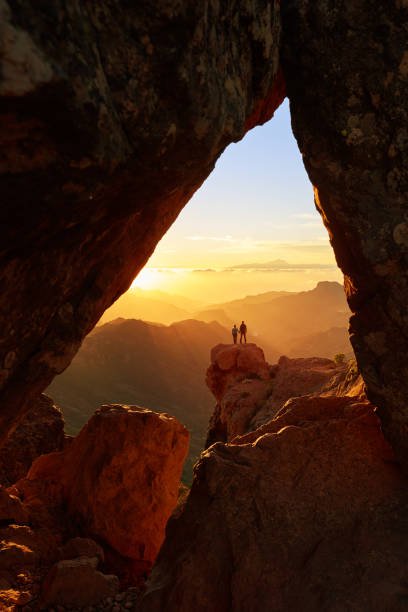
Best Places to Visit in Spain 2023
Spain, a country rich in history, culture, and breathtaking landscapes, beckons travelers with its vibrant cities, stunning beaches, and captivating architecture. From the enchanting streets of Barcelona to the sun-kissed shores of the Costa del Sol, Spain offers a diverse array of destinations to explore..

Europe: A Tapestry of Diversity, Culture and Adventure
Europe, a continent as diverse as it is beautiful, is a traveler’s dream come true. From the snow-capped peaks of the Alps to the sun-kissed beaches of the Mediterranean, Europe offers an enchanting mix of experiences for every type of traveler. Join us as we embark on a journey through the heart of Europe, discovering…

Our Top 5 Best Places to Visit in Kuwait
Discovering Kuwait: Journey Through its Hidden Treasures Hey fellow wanderlusters, let’s dive into Kuwait’s kaleidoscope of culture, where the past meets modernity. I’ve uncovered five must-visit spots for the young and adventurous traveler. From sipping on sweet tea under Bedouin tents to catching epic sunsets, Kuwait is an adventure waiting to happen. Map of Kuwait…

Our Top 5 Best Places to Visit in Dominica
Dominica: Where Adventure Meets Paradise Welcome to Dominica, the “Nature Island” of the Caribbean. If you’re seeking a destination that’s off the beaten path, brimming with natural wonders and adventure, you’ve found it. Here, you’ll explore lush rainforests, soak in rejuvenating hot springs, and dive into sparkling turquoise waters. Let’s embark on a journey to…
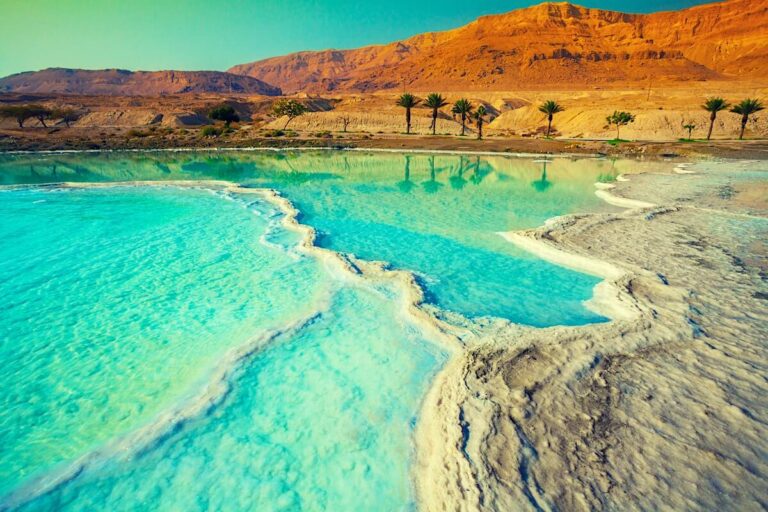
Our Top 5 Best Places to Visit in Jordan
My Journey Through Jordan’s Top 5 Destinations If you’re ready to dive into a world of ancient wonders, surreal landscapes, and incredible experiences, then Jordan is calling your name. Let me take you on a ride through my unforgettable journey as I uncovered the 5 best places to visit in this captivating country. Map of…

Our Top 5 Best Places to Visit in Lebanon
Lebanon Unveiled: Exploring the Mystique of the Middle East Welcome to the captivating land of Lebanon! Nestled along the Mediterranean Sea, this enchanting country is a treasure trove of history, culture, and natural beauty. Let’s embark on a journey to discover some of the most mesmerizing places that Lebanon has to offer. Map of Lebanon…
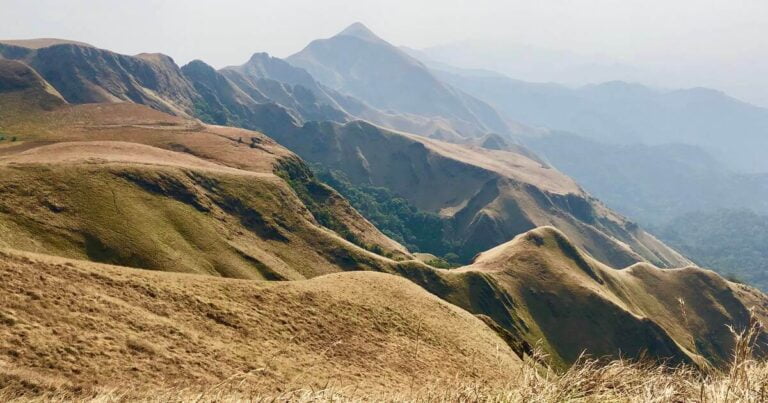
Our Top 5 Best Places to Visit in Guinea
Unveiling Guinea’s Hidden Treasures: 5 Must-Visit Places Are you ready for an off-the-beaten-path adventure in West Africa? Guinea, a hidden gem nestled between Guinea-Bissau, Senegal, Mali, Cote d’Ivoire, Liberia, and Sierra Leone, awaits your discovery. Prepare to be captivated by its vibrant culture, stunning landscapes, and welcoming people as we explore some of the must-visit…
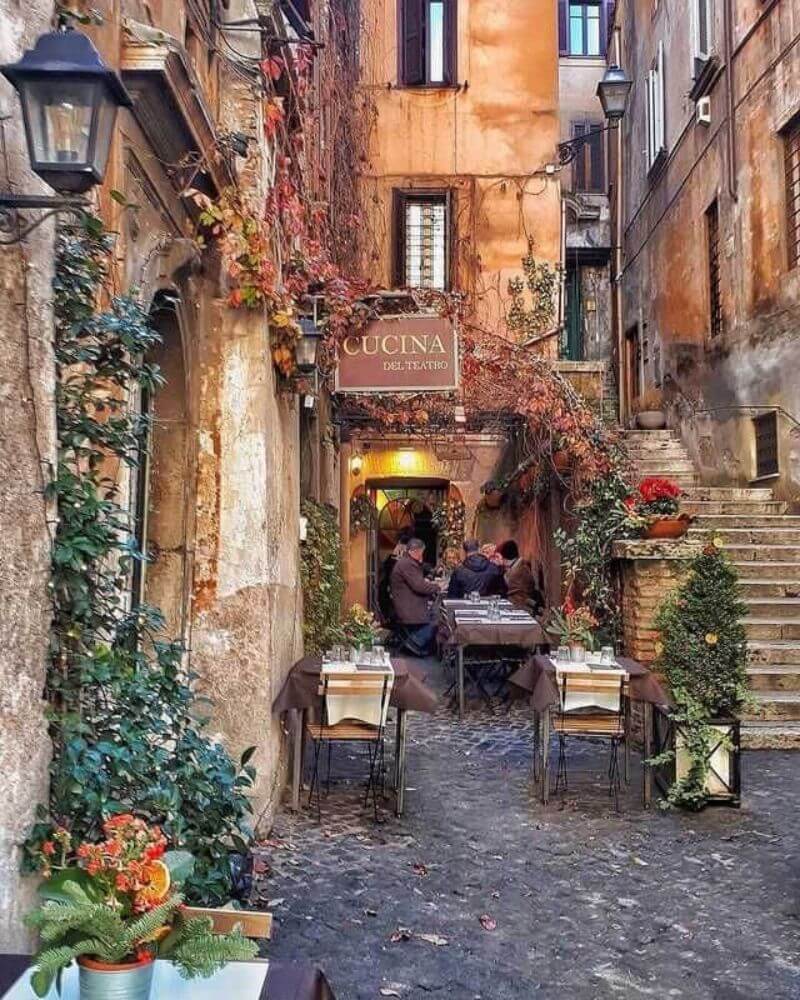
Best Places to Visit in Italy 2023
Italy, a land of romance, rich history, and breathtaking landscapes, beckons travelers with its magnetic allure. From the captivating cities adorned with timeless architecture to the picturesque coastal towns and rolling vineyards, this Mediterranean gem offers a plethora of unforgettable experiences..
Exploring Greece’s Timeless Treasures: Greece Best Places to Visit Top 10
Exploring Italy’s Treasures: The Best Places to Visit in Italy in 2023
Our 10 Best Places to Visit in Venice: Come Explore the Enchanting Floating City
Unveiling the Enchanting Beauty: Our Best Places to Visit in Florence
Our Best Free Places to Visit in New York That are yes, Absolutely FREE!
Our Best 10 Affordable Vacation Destinations if you are on a tight budget.
Our 10 Best Budget Travel Tips: Explore the World Without Draining Your Bank Account.
These are our Top 10 Best Travel Destinations Worldwide 2023
Our Absolute Best list of 10 Less Touristy Places to Travel in Europe 2023
Australia: A Traveler’s Paradise: Best Australian Destinations 2023
Our Top 5 Best Places to Visit in South Sudan – By David John
5 Best Places to Visit in South Sudan: Cover Image Courtesy: ub
Best Places to Visit in South Sudan: flickr images licensed under CC BY 2.0
Additional images: adobe · colourbox · istock · pexels · shutterstock · unsplash unless otherwise stated.
Were our Top 5 Best Places to Visit in South Sudan: helpful to you?
Let us know your thoughts in the comments below..
And if you are looking for a specific piece of information, please do comment below..
